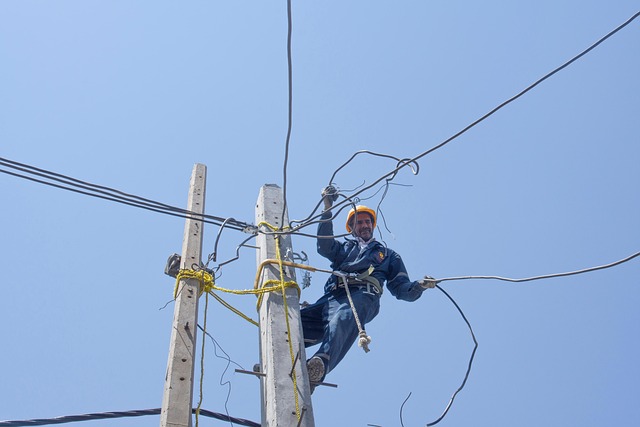Electricity plays a silent but steady role in everyday life. From powering appliances to lighting entire homes and businesses, the electrical system sits at the heart of nearly every modern convenience. When things go wrong, they rarely do so at a convenient time. Flickering lights, circuit overloads, or tripped breakers can be warning signs of something more serious. Unfortunately, waiting until a system breaks down often leads to high repair bills and potential safety hazards. Regular maintenance isn’t just about keeping things running—it’s a strategic choice to prevent unexpected disruptions and financial strain. By addressing small issues before they grow, property owners can maintain safety, reduce costs, and avoid last-minute emergency calls.
Identify Potential Issues Early
Small problems rarely stay small when it comes to electricity. What begins as a loose wire or minor corrosion can snowball into a complete system failure. A maintenance routine gives professionals the chance to inspect panels, wiring, outlets, and breakers on a schedule that helps spot damage before it turns into a crisis. Catching these early signs can make a major difference, especially in buildings with aging infrastructure or heavy electrical usage. When something does slip through, it helps to know where to turn. That’s where on-call electricians for urgent issues come into play. They step in when things go wrong outside regular hours, but regular inspections reduce how often that call needs to be made. Maintenance doesn’t eliminate all risks, but it keeps surprises to a minimum by offering early intervention opportunities.
Prevent Fire Hazards
Worn insulation, overheating wires, and overloaded circuits are more than just annoying—they can start fires. According to fire department data, electrical failures remain a leading cause of residential and commercial fires. A maintenance visit often includes thermal imaging to detect overheating components, tightening loose connections, and replacing outdated wiring, all of which lower the risk of combustion.
Neglected systems are more likely to overheat or spark. These conditions rarely give warnings that homeowners or staff can spot easily. By the time a burning smell appears or breakers begin to trip often, the problem may already be severe. Inspections allow for the replacement of worn components and adjustments that keep energy flowing safely, without unnecessary strain.
Extend the Life of Electrical Equipment
Just like any other mechanical system, electrical setups wear down over time. The lifespan of panels, switches, transformers, and outlets can be cut short if dust builds up or wiring begins to fail under constant strain. Regular maintenance keeps things clean, cool, and operating within their intended capacity.
Commercial equipment, such as HVAC systems and industrial machines, place unique loads on circuits. When the power delivery isn’t balanced or maintained, those machines suffer more frequent breakdowns. Replacing one piece of equipment is expensive enough—replacing multiple machines due to power irregularities can be overwhelming. Scheduled inspections help avoid such cascading failures by keeping everything in sync.
Reduce Energy Waste
An inefficient electrical system isn’t just harder to manage—it costs more to operate. Loose connections and outdated components increase resistance in circuits, which leads to higher energy use. Regular maintenance helps keep wires secure, connections tight, and systems balanced. This reduces the burden on both the system and the utility bill.
LED lights, smart meters, and efficient transformers help, but they only perform at their best when installed correctly and maintained over time. Energy waste often hides in places that seem harmless, such as underperforming power strips or worn-out ballasts in lighting systems. Maintenance identifies these trouble spots and replaces them with more efficient alternatives.
Maintain Compliance with Regulations
Residential and commercial buildings must meet local electrical codes. These regulations exist to protect occupants and workers from dangerous conditions. When a building falls out of compliance, the consequences may include fines, denied insurance claims, or legal complications in the event of an incident.
Routine maintenance ensures all parts of the electrical system meet current standards. This becomes especially important during renovations or when expanding a facility. Inspections catch compliance issues before they lead to costly citations. For business owners, that peace of mind often outweighs the cost of the maintenance visit itself.
Avoid Business Interruptions
Downtime hurts profits. For businesses, an unexpected power failure can stop production lines, delay deliveries, and force customers to go elsewhere. Even a few hours without power may lead to spoiled inventory, missed deadlines, or security risks. Regular electrical maintenance acts as a buffer against these unplanned outages.
Power disruptions can come from external grid problems, but many stem from preventable internal faults. Frayed wiring, loose panels, or aging breakers often trigger shutdowns when left unchecked. By scheduling inspections during off-hours or slow periods, businesses stay open and productive without sacrificing safety.
Regular electrical maintenance does more than keep the lights on. It identifies early signs of damage, prevents dangerous conditions, and saves money over time. By addressing small concerns before they escalate, property owners avoid surprise repair bills and protect both their systems and their occupants. Whether it’s reducing fire risks, cutting energy waste, or keeping a business running smoothly, maintenance proves its value again and again.


